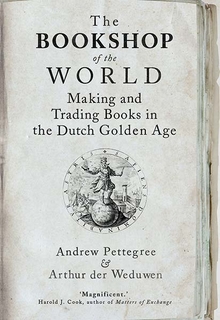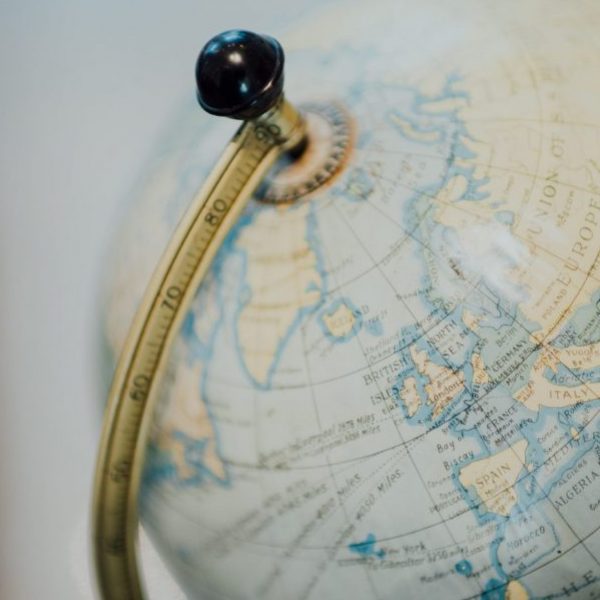The Past and Present of Print
Andrew Pettegree and Arthur der Weduwen—
Does Tim Berners-Lee regret inventing the internet? At the time, the internet was trumpeted, like any step forward in information culture, as a liberating force, an instrument of democratic empowerment. No-one foresaw the dark web, online betting, still less fake news. Citizen journalism begat the internet troll, a world in which public figures are now routinely threatened and abused. How’s it working for you now, Tim?
If it is any consolation, it was pretty much the same with the invention of printing. Gutenberg’s invention was garlanded with praise, the agent of a new age of civilized discourse for humanist scholarship. Gutenberg published his Bible and then went bankrupt, along with most of the first generation of his fellow printers. Meanwhile most of the most celebrated medieval libraries – collections of manuscripts – fell into neglect. It would take the best part of a century before the new industry developed a sustainable business model, and two centuries more before Europe worked out a real purpose for a public library.
Should this matter? At one level, this is a story of the optimism of the human spirit, along with the altruism of that small class of inventor for whom making money from their genius is a small consideration. It is more worrying that scholars seem just as likely to be swept away with the wave. It is not that we are congenitally optimistic; academics can be quite grumpy. It is more the extent to which so much research consists of trawling the past for signs of the phenomena, intellectual movements or social memes that have become important in our own day. I have lost track of the number of times I have been asked to write something on ‘fake news’ in the early modern information market, missing the point that the logistic difficulties of obtaining any news back then always took preference over any question of interpretation or manipulation.
Some of this is survivor bias. A great cathedral is a much more durable monument of medieval society than the wooden lean-to shacks that huddled against their walls. In the work in which we are engaged, the world of print and communication media, big books survive better than the short texts sold for a few pence on the mass market. The notices of new laws, pasted up on the doors of churches and at the city gate, scarcely survive at all. Some of this is inevitable – rain and the need to reuse paper for domestic purposes disposed of much of this cheap print within a couple of years, even if when first published it was crucially important to its first readers. But it is also the case that libraries have spent four centuries reinforcing this survivor bias, stocking their shelves with ‘important’ texts, even in these were not the books that contemporaries most valued and on which they were prepared to expand their hard owned cash. A few months ago, we had a bit of fun with a high-minded project called ‘Print and the Mind of Man’, texts which, according to the learned panel that made the selection, were the building blocks of our civilization. Yet some of these texts do not figure in the contemporary records of book ownership at the time – at all. Their importance is entirely of our creation.
In the case of the Dutch Republic, an ingenious and dynamic society that burst onto the world scene in the seventeenth century, scholars have chosen to focus on books that offer a parallel of this inventive entrepreneurial spirit, such as the atlas of Joan Blaeu. It is also a very beautiful and photogenic book. But a book like that would have cost the equivalent of a year’s salary for all but the richest citizens. This was a status symbol rather than something you actually read.
To find out what men and women really bought, you need to turn away from the treasures most valued in our great libraries, to the records of everyday commerce. What you find in the stock catalogs of Amsterdam printers serving the home market for instance, is a very different sort of book. Collections of songs or stories of miraculous escape from a shipwreck in the Indian Ocean; an accounting text to prepare the son of the family for a life in trade; most of all, prayer books and a New Testament to carry to church; all of these were the precious carefully weighed purchases of thousands of Dutch homes. Many of the titles exhumed from these documents cannot now be traced in a present-day library collection. If they do survive, it is usually the only known copy of an original edition of five hundred. The advertisements published in the first Dutch newspapers proved to be another happy hunting ground: around a third of the books advertised there have disappeared entirely.
It turns out that the real genius of the Dutch publishing world was not the Blaeu Atlas, but devising a new model of a mass market, publishing in large quantities, selling at low margins, with quick sales. This worked as well with books as it did with whale blubber. It also didn’t harm to have the occasional Blaeu, or the Elzevier Galileo to burnish your scholarly credentials. This proved to be a winning combination: by the end of the century Amsterdam was the centre of the book market, the bookshop of the world.
To study the past, we need to look past the most obvious sources to ask what people back then really cared about, even if those preoccupations are not necessarily ours. And best to leave the prophecy to Nostradamus: things seldom turn out as contemporary commentators imagine. Just ask Tim Berners-Lee.
Andrew Pettegree is professor of modern history at the University of St. Andrews and director of the Universal Short Title Catalogue. He is the author of over a dozen books. Arthur der Weduwen is a researcher at the University of St. Andrews.
Further Reading:

Featured Photo by Patrick Tomasso on Unsplash


























